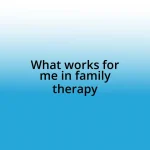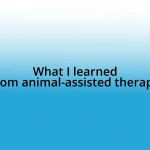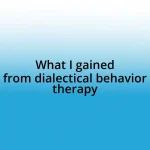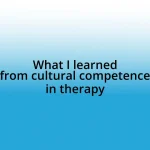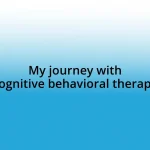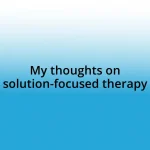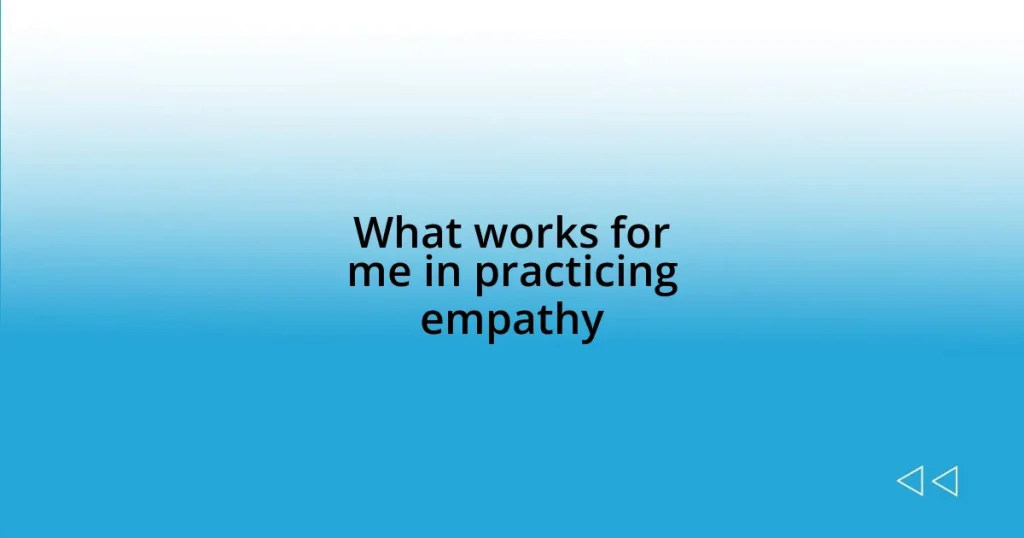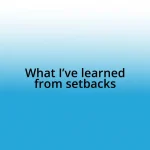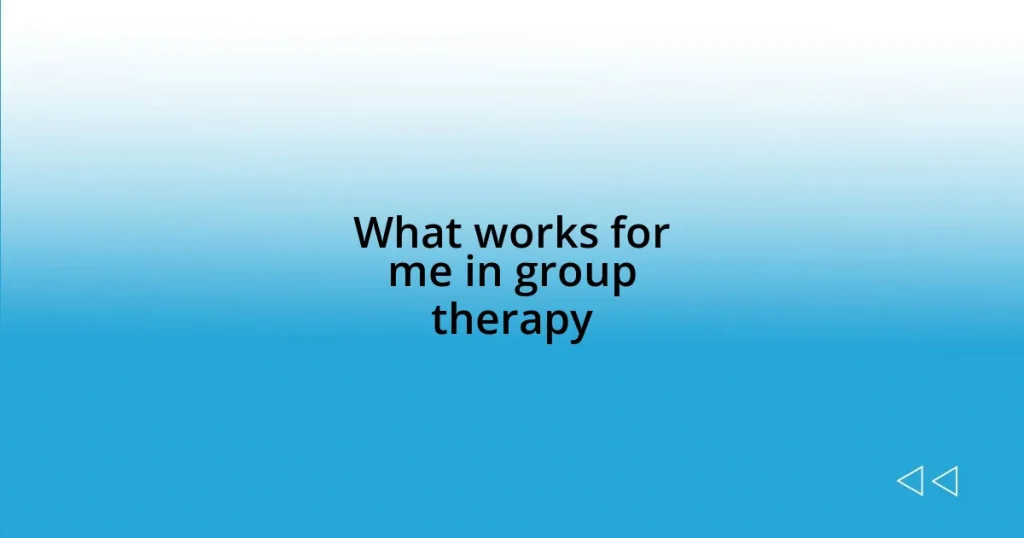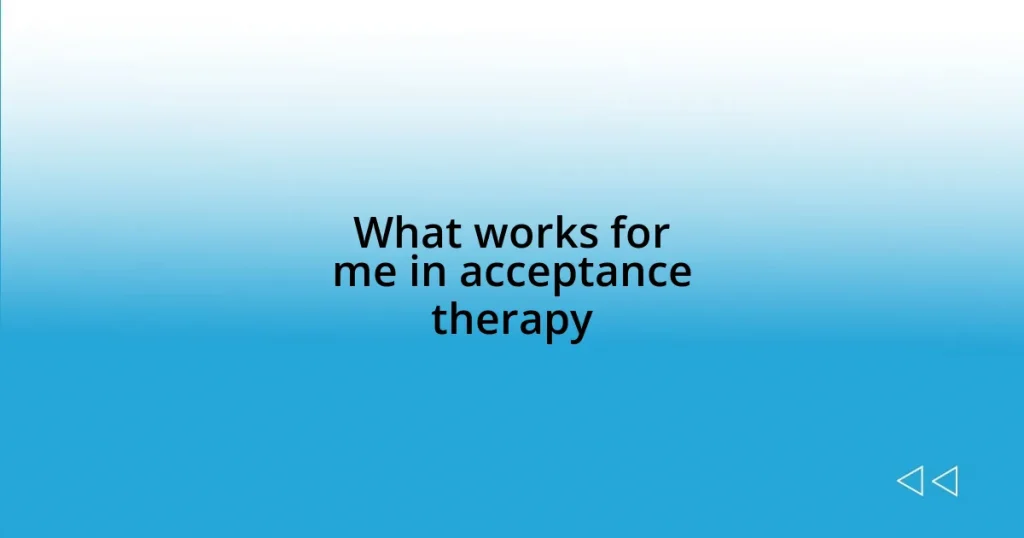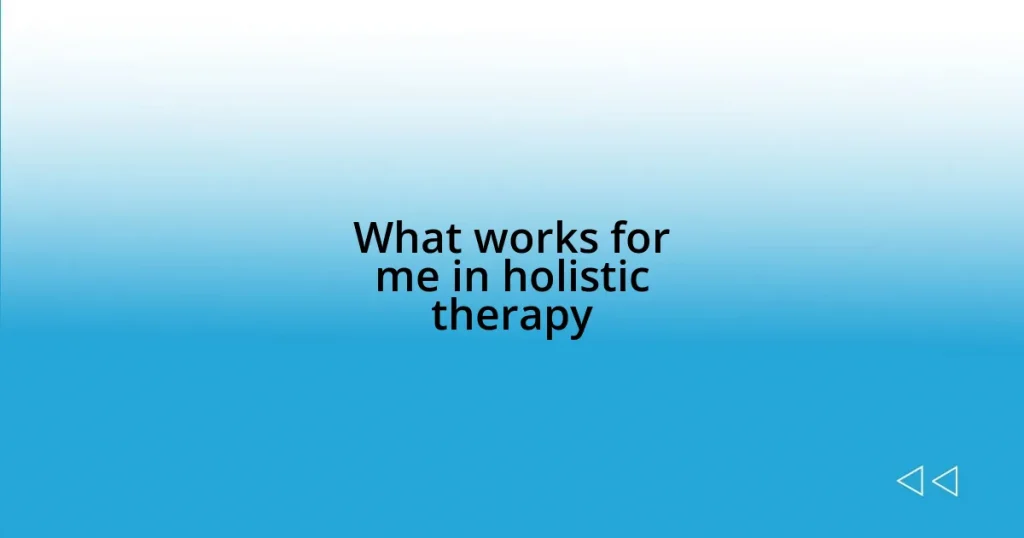Key takeaways:
- Empathy is an active engagement with others’ emotions, requiring deep connections rather than mere sympathy.
- Recognizing emotional triggers enhances compassion and improves interactions by fostering self-awareness.
- Active listening techniques, such as maintaining eye contact and avoiding interruptions, significantly strengthen relationships.
- Building emotional connections and reflecting on personal experiences create deeper understanding and pave the way for healing conversations.
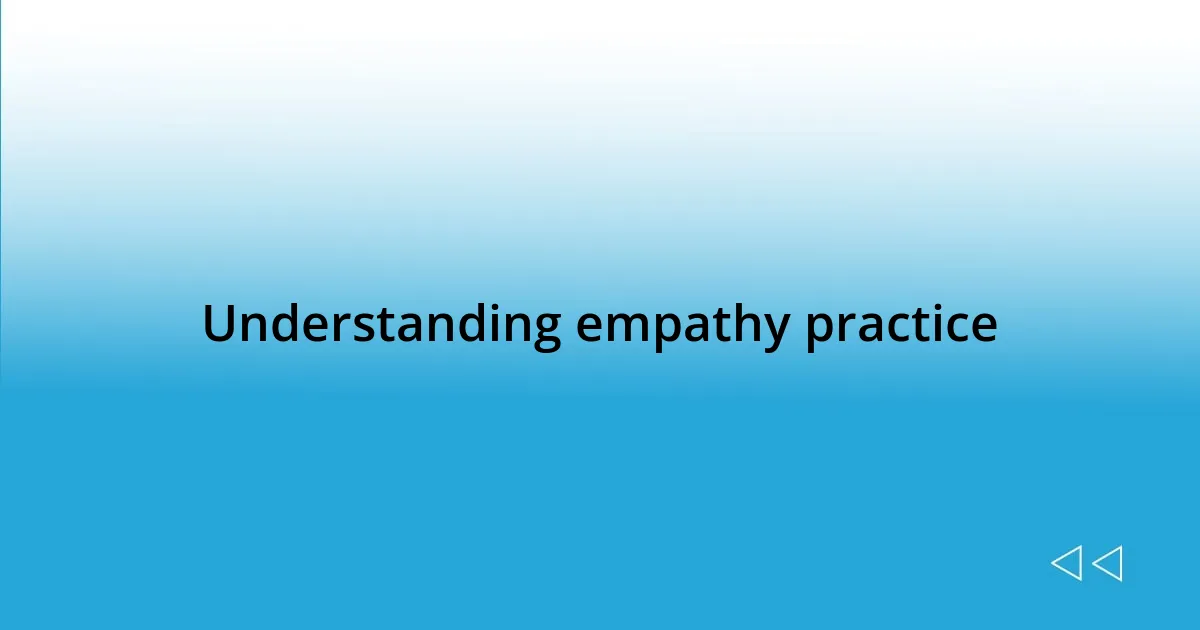
Understanding empathy practice
Empathy practice is more than just a concept; it’s an active engagement with the emotions of others. I remember a time when I was listening to a friend share their struggles, and I realized that simply nodding wasn’t enough. I needed to connect with what they were feeling, to allow their emotions to resonate with my own, and that transformed the conversation.
When we truly understand empathy, it becomes clear that it’s about more than sympathy or feeling sorry for someone. Instead, it’s about stepping into their shoes, if only for a moment. Have you ever thought about how powerful it is to validate someone else’s feelings so they feel truly seen and heard? I’ve found that when I share my own vulnerabilities and invite others to do the same, I not only cultivate trust but also deepen my understanding of human experience.
In practicing empathy, I’ve learned that active listening is crucial. It’s about being present, not just in body but in spirit. There were times when I found my thoughts wandering during conversations, dismissing what’s said as simple complaints instead of meaningful expressions. Catching myself in those moments has illuminated how easily we can miss out on connections that could enrich both our lives and those of others.
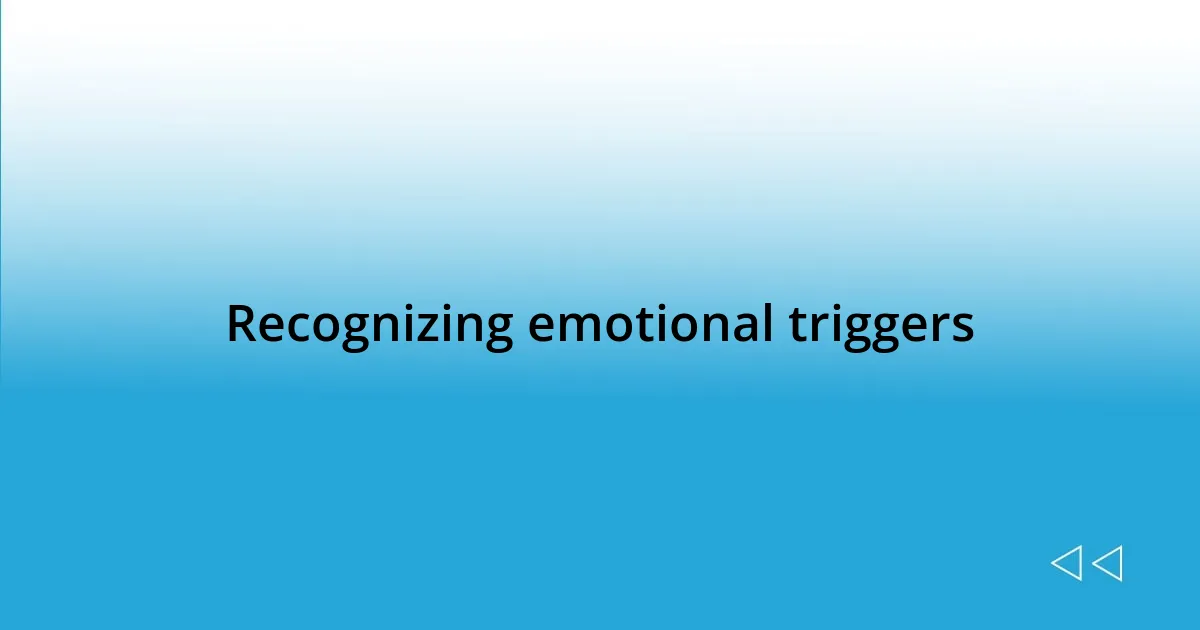
Recognizing emotional triggers
Recognizing emotional triggers is a key step in empathizing with others. For instance, I’ve noticed that certain comments can ignite strong reactions in me; my heart races and my mind gets defensive. By acknowledging these reactions, I can understand better what emotions lie beneath the surface. This self-awareness allows me to approach others with more compassion instead of reacting impulsively.
In various situations, I’ve learned to identify my emotional triggers by reflecting on past experiences. A particularly impactful moment was during a heated discussion with a colleague. Realizing that their assertiveness mirrored my father’s behavior led me to pause and reassess my feelings. Instead of fueling the conflict, I chose to express my discomfort and that shift changed the dynamic completely.
We often overlook how understanding our emotional triggers can enhance our interactions. When I take the time to reflect on why I react a certain way, I find that it opens up opportunities for deeper connections. It’s fascinating how recognizing a simple trigger can transform a potentially tense encounter into a mutually insightful conversation.
| Trigger | Response |
|---|---|
| Raised voices | Defensiveness, anxiety |
| Criticism | Self-doubt, withdrawal |
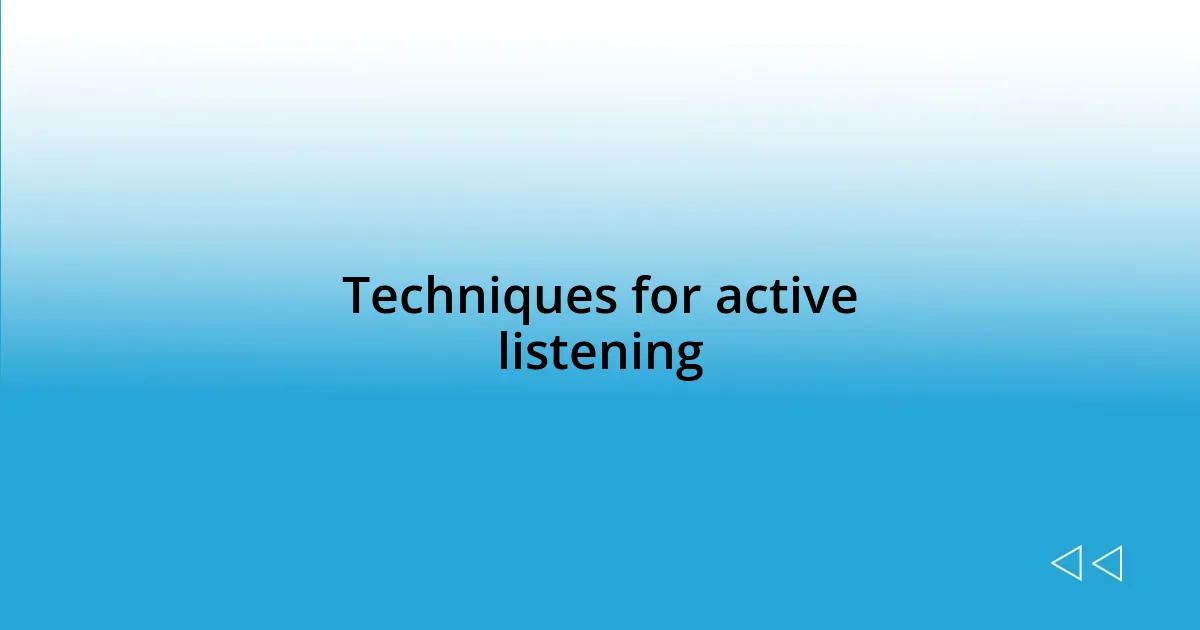
Techniques for active listening
When it comes to active listening, I’ve discovered that focusing my attention fully on the speaker is essential. I’ve made it a habit to put away my phone and close my laptop to minimize distractions. One time, a friend shared a painful experience, and I realized how much I was missing by not being fully engaged; I could see the weight of their words and the vulnerability behind them. The more I practiced this, the deeper my connections became.
Here are some techniques that have worked for me:
- Maintain Eye Contact: It shows you are genuinely interested and helps build trust.
- Use Affirmative Nods: Simple gestures can encourage the speaker to continue, signaling that you’re with them.
- Paraphrase What You Hear: Restating their words in your own way demonstrates understanding and encourages clarity.
- Ask Open-Ended Questions: This invites the speaker to explore their feelings and thoughts further.
- Avoid Interrupting: Allowing someone to express themselves fully promotes a safe space for sharing.
Integrating these techniques into my conversations has transformed how I interact with others. I once realized during a difficult talk with my partner that interrupting her created barriers instead of bridges. After committing to listen without interruption—even when I felt the urge to respond—I noticed how much more connected we felt. It was like each pause filled the room with a deeper understanding of one another.
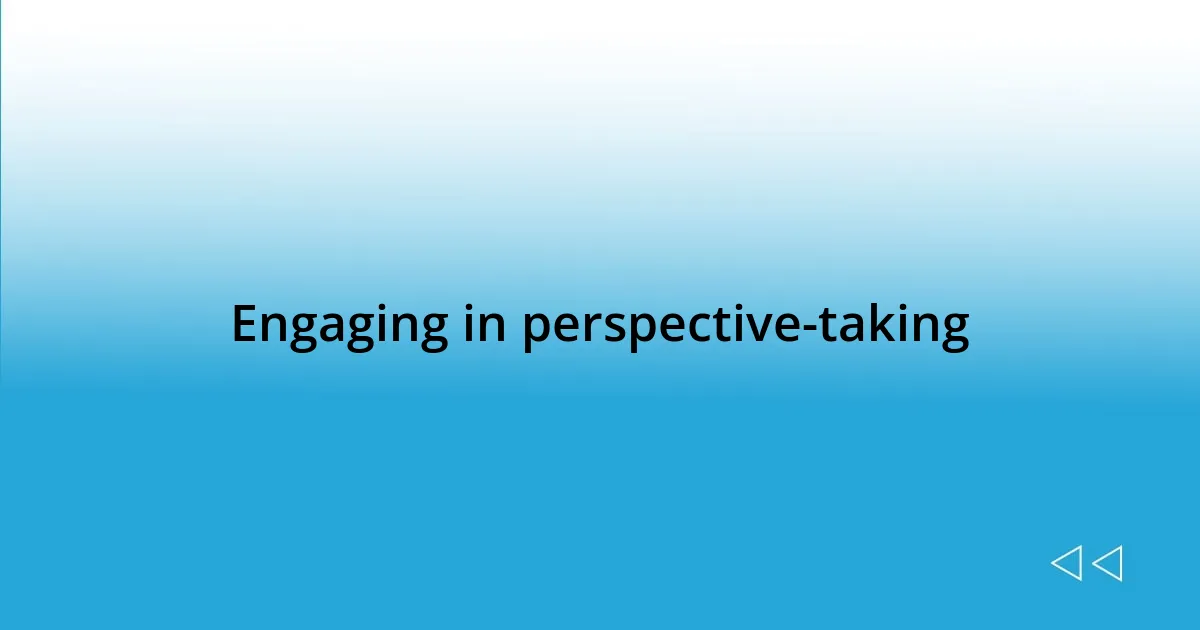
Engaging in perspective-taking
Engaging in perspective-taking has been a transformative practice for me. I often challenge myself to see situations through someone else’s lens. I remember a time when a friend seemed upset after a casual gathering. Instead of jumping to conclusions, I took a moment to consider her recent struggles with work. This simple act of stepping into her shoes shifted my response and opened the door to a genuine conversation about her feelings.
In another instance, during a discussion about a controversial topic, I realized that my initial reactions were rooted in my values. By deliberately pausing and reflecting on how others might see the issue, I was able to empathize with different viewpoints. This, in turn, helped diffuse tension. Have you ever felt that pulling back and considering someone else’s perspective could change the course of a conversation? I have, and it’s a powerful reminder that empathy isn’t just about feeling; it’s also about understanding.
Being open to multiple viewpoints enriches my interactions. I recall a heated debate with a colleague over project direction. Instead of defending my position fiercely, I asked questions to understand her reasoning better. This approach not only made her feel heard but led to a more collaborative solution. Embracing perspective-taking has not just deepened my relationships but also equipped me with the tools to navigate conflicts with grace and understanding.
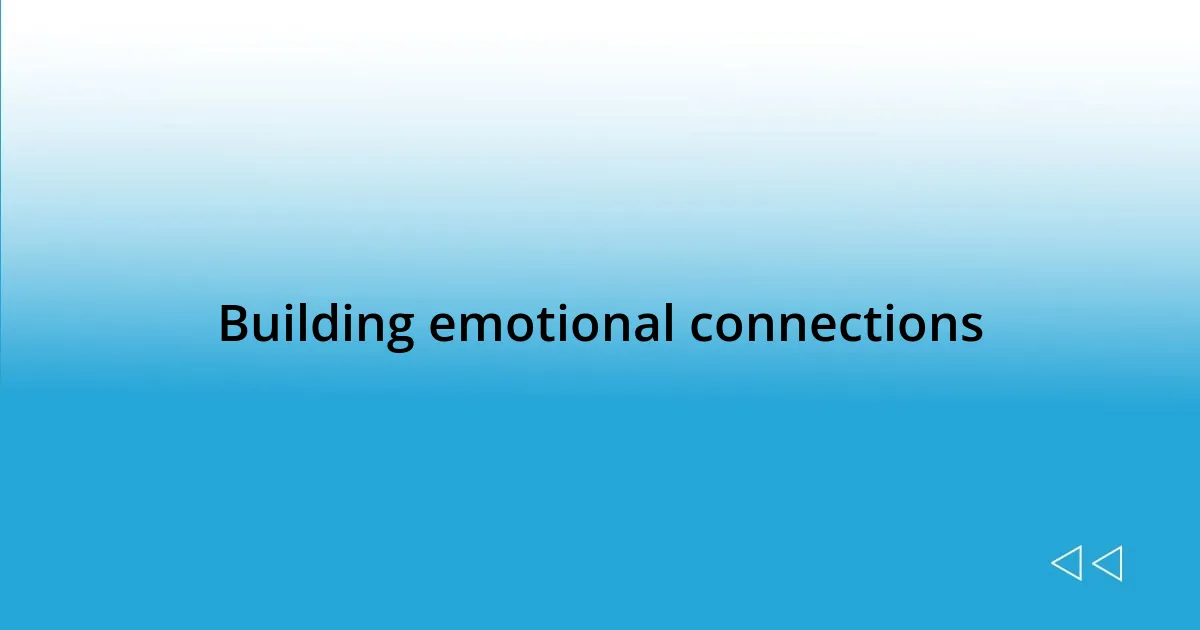
Building emotional connections
Building emotional connections starts with the little things that often go unnoticed. For me, it’s about recognizing the nuances in body language and tone. I’ll never forget a moment when an acquaintance shared his achievement, but I could see a hint of sadness in his eyes. I asked him about it, and what unfolded was a heartfelt conversation that unveiled his fears of not being good enough. That moment reinforced how awareness can create profound bonds.
Sometimes, I find that sharing my own vulnerabilities fosters a deeper connection. I recall a time I opened up about my struggles with anxiety during a team meeting. Instead of the expected awkward silence, my colleagues responded with empathy, and it sparked a wave of sharing. Have you ever felt that a simple admission could dissolve barriers? For me, that experience was a reminder that we’re all human, craving connection and understanding.
Listening isn’t just about hearing words; it’s about tuning into emotions. At a family gathering, my cousin seemed withdrawn, and rather than letting it slide, I approached him with a casual chat. I chose my words carefully, validating his feelings without judgment. When he eventually opened up about his recent challenges, I realized that a simple, empathetic inquiry could pave the way for healing conversations. That’s the magic of building emotional connections—one small step can lead to significant understanding and support.
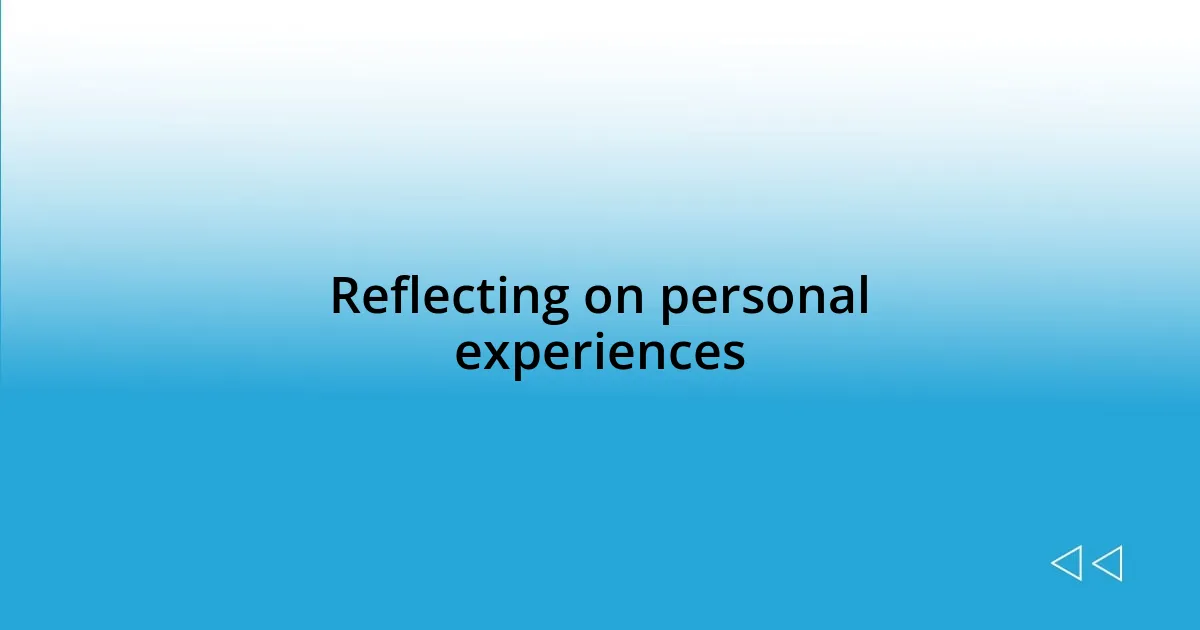
Reflecting on personal experiences
Reflecting on personal experiences has taught me the value of pause and introspection. I remember a time when I rushed to judge a friend based on her abrupt responses during a stressful week. After taking a moment to reflect, I realized her frustration stemmed from external pressures. This experience made me ponder: how often do we leap to conclusions without giving others the grace to be imperfect?
In another situation, I encountered a colleague who seemed distant during team meetings. I decided to reach out, questioning the energy in our interactions. As I reflected on those moments, I understood that my own insecurities contributed to the tension. Sharing that realization with her not only lifted a weight off my shoulders, but it also sparked a deeper dialogue about vulnerability. Have you ever thought that simply acknowledging your own shortcomings could transform a relationship?
Undeniably, these reflections shape my understanding of empathy. There was a day when I had a disagreement with a family member over a trivial issue. Instead of holding on to resentment, I took a step back and recalled our history together. This reflection not only softened my heart but also motivated me to reach out and mend the rift. It’s fascinating how looking inward can pave the way for more profound connections with others, don’t you think?
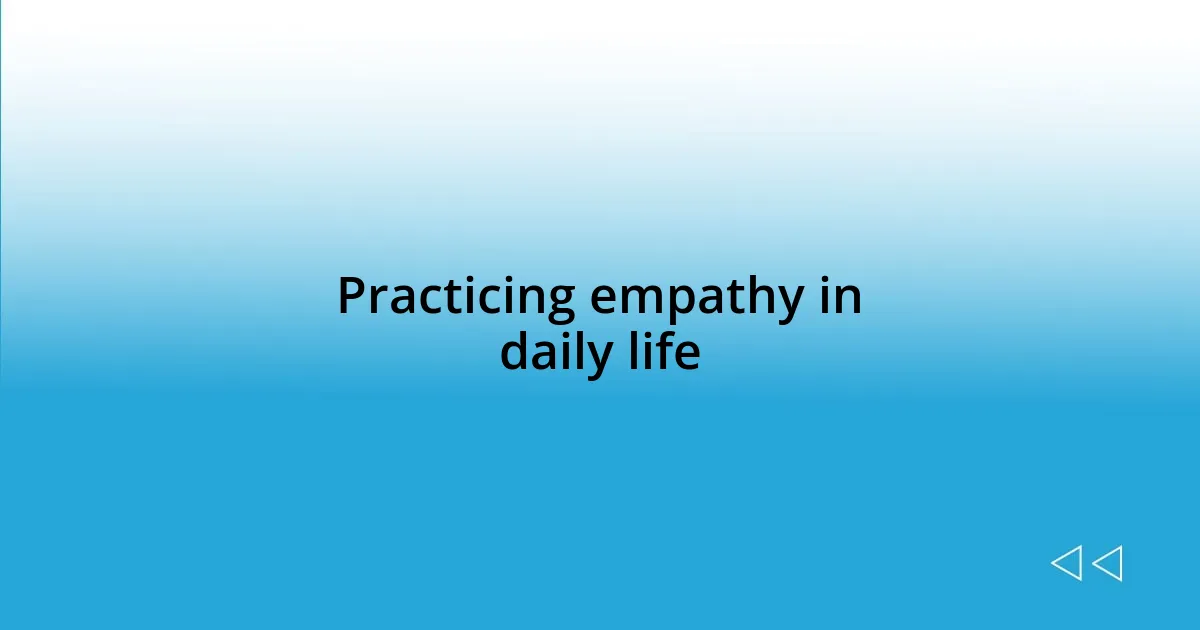
Practicing empathy in daily life
Practicing empathy in daily life often starts with being genuinely present during conversations. I remember a day at the coffee shop when a barista shared her excitement about a new job. While she was smiling, I noticed her hands trembling as she spoke. I paused and said, “It sounds like you’re really excited, but there seems to be a little worry there too. What’s on your mind?” Just that simple question opened up a discussion about her fears of adapting to a new environment. It made me realize that empathy can stem from being observant and offering a supportive space.
Sometimes, the practice of empathy comes from small gestures that mean a lot. I vividly recall a time I wrote a handwritten note to a friend who was navigating a tough family situation. In the note, I included a specific memory that reminded me of her strength. To my surprise, she later told me it was that little gesture that lifted her spirits and made her feel seen. Can something as simple as a note really change someone’s day? Absolutely. It reinforced for me that even the tiniest acts can resonate deeply.
Acts of kindness don’t always have to be grand gestures; they can emerge in our everyday interactions. One afternoon, I bumped into an elderly neighbor who was struggling with her grocery bags. Instead of just passing by, I offered to carry them for her. As we walked, I listened to her stories about the neighborhood, learning more about her life experiences. It struck me how these moments not only help others but also enrich our own understanding of the world. Have you ever considered how a brief encounter could transform the way you see kindness? For me, it’s in those fleeting moments where empathy truly shines.




